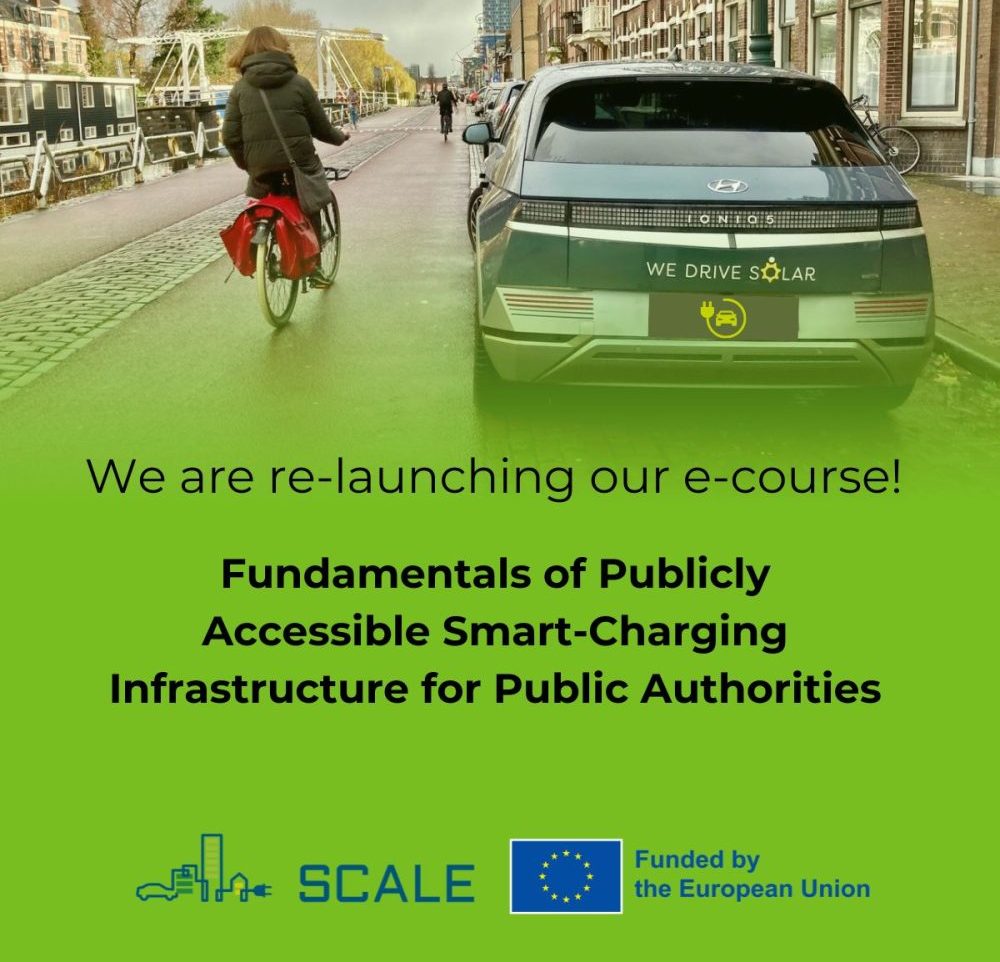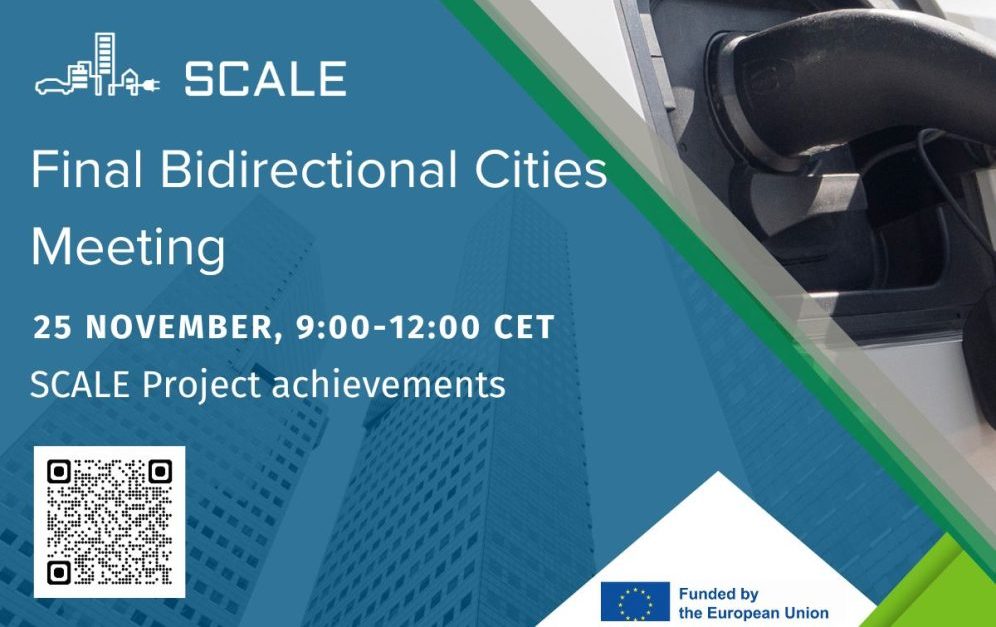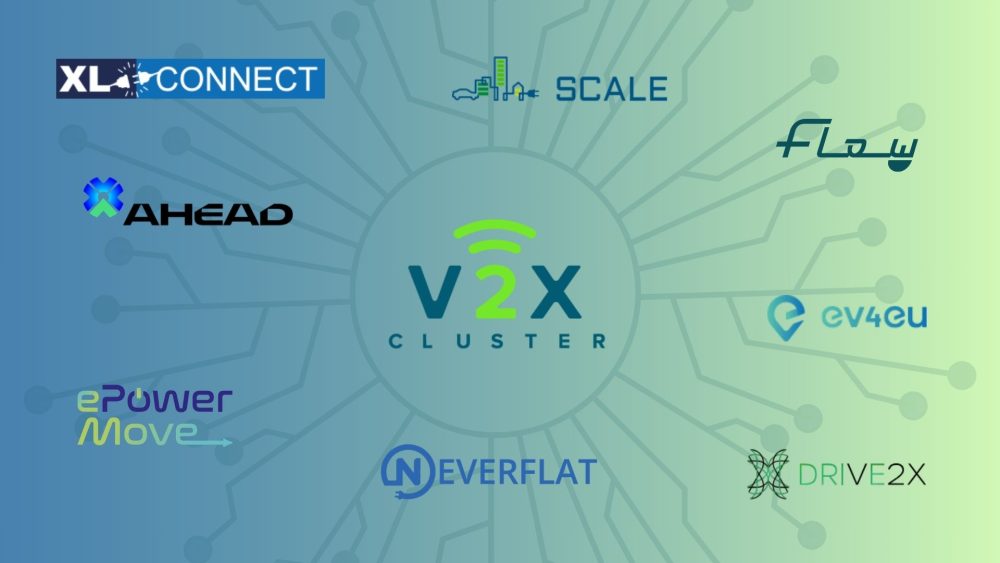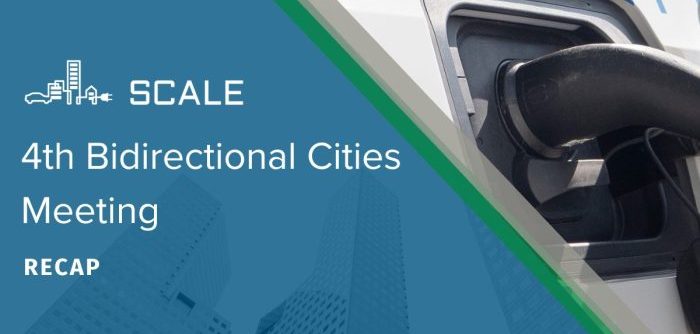SCALE is re-launching its comprehensive e-course designed specifically for public authorities. Coordinated by Rupprecht Consult, this four-module course equips participants with the essential knowledge, cutting-edge technologies, and strategic approaches needed to plan and implement efficient and sustainable smart charging infrastructure in cities and regions.
This updated edition includes a brand-new Unit 4, expanding the course content and offering fresh perspectives on global applications of smart and bi-directional charging (V2X).
What You’ll Learn
The SCALE e-course provides public authorities with a structured, in-depth learning experience covering:
- The fundamentals of smart charging, V2G, and V2X technologies and their benefits for municipalities.
- The role of EV users and behavioural factors in developing future-proof public charging infrastructure.
- The EU policy landscape, including the AFIR regulation, and its implications for publicly accessible smart charging.
- A clear breakdown of the smart charging and V2G value chain, including key stakeholders and services.
- Insights into energy and mobility services from multiple stakeholder perspectives.
- Different types of smart charging infrastructure: their advantages, use cases, and technical distinctions.
- The connection between shared mobility and V2G, and best practices from leading cities.
- Approaches to planning, designing, and procuring charging infrastructure, including joint procurement opportunities.
- Guidance on funding models, ownership structures, and budget planning for charging networks.
NEW: Expanding Smart Charging and V2X Beyond Europe
The new Unit 4, titled “Expanding Smart Charging and V2X Beyond Europe,” invites policymakers, planners, and mobility innovators to explore how emerging markets can lead the global energy transition.
Participants will gain insights into:
- Global communication standards and infrastructure requirements;
- Policy frameworks and implementation strategies for non-EU contexts;
- Solutions for grid instability, energy access, and affordability challenges;
- How smart charging innovation can boost energy resilience, job creation, and sustainable mobility.
With a focus on practical applications and real-world examples, this self-paced online course offers an invaluable learning opportunity for local and regional authorities worldwide.
👉 Enroll now and discover how smarter charging leads to a smarter, more sustainable future.










